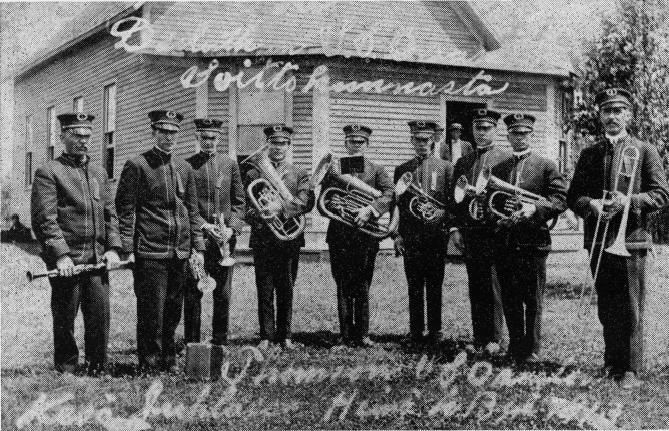men and women who took part in it were inspired by their ideal and convinced of the righteousness of their faith. They were, in addition, human beings, not angels, who learned from their mistakes. The movements they created gave the Finnish workers a possibility to learn the English language, to become acquainted with American history, and to draw their own conclusions about its economic and social developments. If their conclusions were such that they were drawn into a battle for better conditions, their many labor strikes and on the job conflicts nevertheless also gave something to the United States : a demonstration of their desire for a better society. They were also among those whose example created that mass strength and organized activity which American society later accepted as a natural factor in labor

Duluth S. S. O. band in 1913. Names of the first two men are not remembered.
Others are: Toivo Sihvola, Yrjö Yrjölä, Richard Seppälä, Matti Wahlberg,
Armas Vanhala and John Mäki.
relations. Their misfortune lay in the fact that they were pioneers; their greatness, in that they never compromised in their demands.
The Cultural Activities of the Finnish Workers in Duluth: Returning from the glimpse at the labor movement to Duluth's St. Croix Avenue, it is easier to understand the feverish activity that prevailed there.
The Socialist Party chapter first held its meetings in a big loft over a grocery store, but for big program evenings the Kalamazoo or Flaaten Hall was rented. In 1913, the organization
243